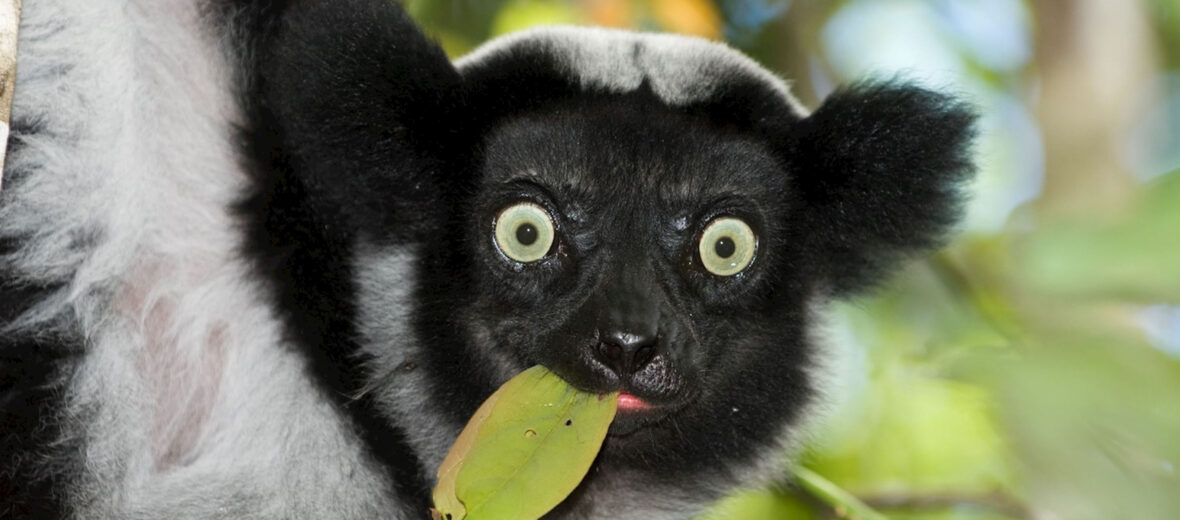
One of the largest lemurs, the indri, aka Babakoto or ambalana, can be found between Mangoro River and Sambava city in the eastern part of Madagascar. In the 1800s, they used to be far more prevalent. Thanks to the near constant deforestation to make way for agriculture and mining, their habitat has steadily shrunk. It is estimated that there are fewer than 10,000 remaining in the wild. The IUCN lists the indri as Critically Endangered. 1 step away from extinct! Climate change is also to blame for their falling numbers. These primates exhibit almost human-like behaviors, from the way they play to how they bond.
First the Stats…
Scientific name: Indri indri
Weight: Up to 19 lbs.
Length: Up to 2.4 feet
Lifespan: Up to 18 years
Now on to the Facts!
1.) Unlike other lemurs, the indri has only a 2 inch long tail.
2.) They can be found in coastal and montane rainforest habitats.
3.) Indris are diurnal (active during the day).
4.) These primates are gluttons that spend up to 60% of the day eating. Like my kids.
5.) The indri is arboreal (spends most or all of their life in trees), like other lemurs.
But wait, there’s more on the indri!
6.) While on the ground, they travel by hopping sideways, with their arms in the air.
7.) Indris are highly social and live among family groups of up to 5 individuals.
Did you know…?
An indri is capable of leaping up to 33 feet, from branch to branch!
8.) A group of lemurs is called a conspiracy or a troop.
9.) Troops are matriarchal (led by a dominant female). What other critter is governed by a matriarch? If you guessed elephant, you’re correct.
10.) Males are in charge of defending the conspiracy.
But wait, there’s still more on the indri!
11.) The male will mark their territory via scent markings, secreted from their cheeks and also by urinating.
12.) They eat a variety of flowers, leaves, fruit, and seeds. This makes them important seed dispersers.
Did you know…?
Indri lemurs have a special laryngeal air sac, that lets them sing beautiful, yet scary sounding songs. They sing for up to 3 minutes at a time and they can be heard over a mile away!
13.) The primary predator of these lemurs is the fossa.
14.) Indris are monogamous (mate with a single female) and breed every 2 – 3 years.
15.) Females have a 4 – 5 month gestation (pregnancy) that yields a single infant.
But wait, there’s still a little more on the indri!
16.) These wonderful climbers have an opposable big toe on each foot that aids in scaling trees with the best of them.
17.) A powerful sense of smell afford them the ability to pick up on predators and the scents left behind from other lemurs.
18.) The indri is tied with the diademed sifaka for largest lemur.
Now a Short Indri Video!
Be sure to share & comment below! Also, check out the Critter Science YouTube channel. Videos added frequently!
Want to suggest a critter for me to write about? Let me know here.



